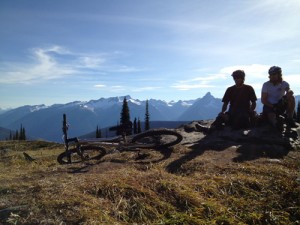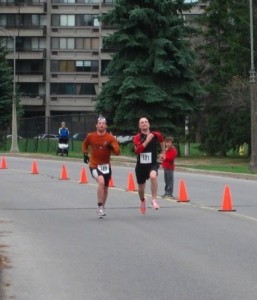Epic Run: Keystone Standard Basin

By: Magi Scallion
I got to spend a very lovely weekend in Revelstoke, BC, this fine September. Revelstoke has long been a winter destination for skiers and snowmobilers with legendary back country and deep powder, but it’s now becoming a mountain bike and trail running destination in the summer months.
A lot of the recent summer hype has been around two amazing, epic trails that were recently build or rediscovered. The Frisbey Ridge trail runs through the Monashee mountains, on the west side of the famous Columbia River, and is a panoramic 26 km out-and-back run. The trail was recently refurbished and gives the feel of front-country trail running: limited rocks and routes with great panoramic vistas. The trail involves 7 km of climbing right out of the parking lot (which means 7 km of descending back to the parking lot) so put on your best suffer smile and get to it: it’s worth it. I, personally, did not do this run, but got the report from a few friends who did it the day before I arrived.
The trail I got to enjoy was Keystone Standard Basin, which falls on the east side of the Columbia River, on the edge of the majestic Selkirk Mountains. This trail, similar to Frisbey is about 45 minutes of driving from the Town of Revelstoke. Don’t complain about the drive because it takes you several hundred feet above the valley floor (which means less self-propelled climbing).
To be perfectly honest, I enjoyed the Keystone trail as a cyclist, not a runner. I did the Terry Fox Run in the morning (a hard 10 km effort with a bunch of young guys) so was feeling the need for some seated afternoon exercise. There were plenty of runners on the trail, though, so I can assure you that it is spectacular no matter what form of exercise you choose.
The trail head has lots of parking and also an outhouse: a great feature considering it’s a 45 minute drive from town! I was warned that the first 25 minutes of the trail was all climbing… hard climbing. I was exhausted from the race in the morning so was not really looking forward to this. Let me tell you how happy I was to crest the worst part of the climb within 10 minutes. I am not superwoman: it’s really not that bad. You do continue to climb for about 30 minutes but it’s more of a benched climb with some flatter rest sections. Not as bad as you think!
Once you get the climb over with, you enter into some sublime alpine meadows, which sums up the rest of the trail. It’s 11 km to a lake and small cabin, along a trail that runs around a spectacular basin. The views to the Monashee mountains and deeper into the Selkirks are amazing. Take a camera because you cannot take a bad picture of this area! Rumour has it that the flowers are waist high in the mid to late summer months: that must make for some beautiful colours!
There are lots of viewpoints and features along the way, including a few small streams. You can bring your dog along (best to have a well trained or on-leash dog, in case you encounter some animals). The trail was designed for hiking but the bulk of users are now mountain bikers and trail runners, who have a very symbiotic relationship.

There are lots of great places to stay and eat in Revelstoke – it’s a cute mountain town – so make a weekend of it! I highly recommend:
Camping: Williamson Lake Campground (A lake for swimming and decent tent sites)
Coffee: La Baguette (also a great place for cheese… mmmm cheese)
Greasy Spoon Breakfast: The Frontier Restaurant (who doesn’t love recovery food?)
Wine: Benoit’s Wine Bar (Good wine selection and food)
Beer and Burgers: The Village Idiot (It’s got character and beer…)





 Current Issue
Current Issue Previous Issue
Previous Issue Prior Release
Prior Release
